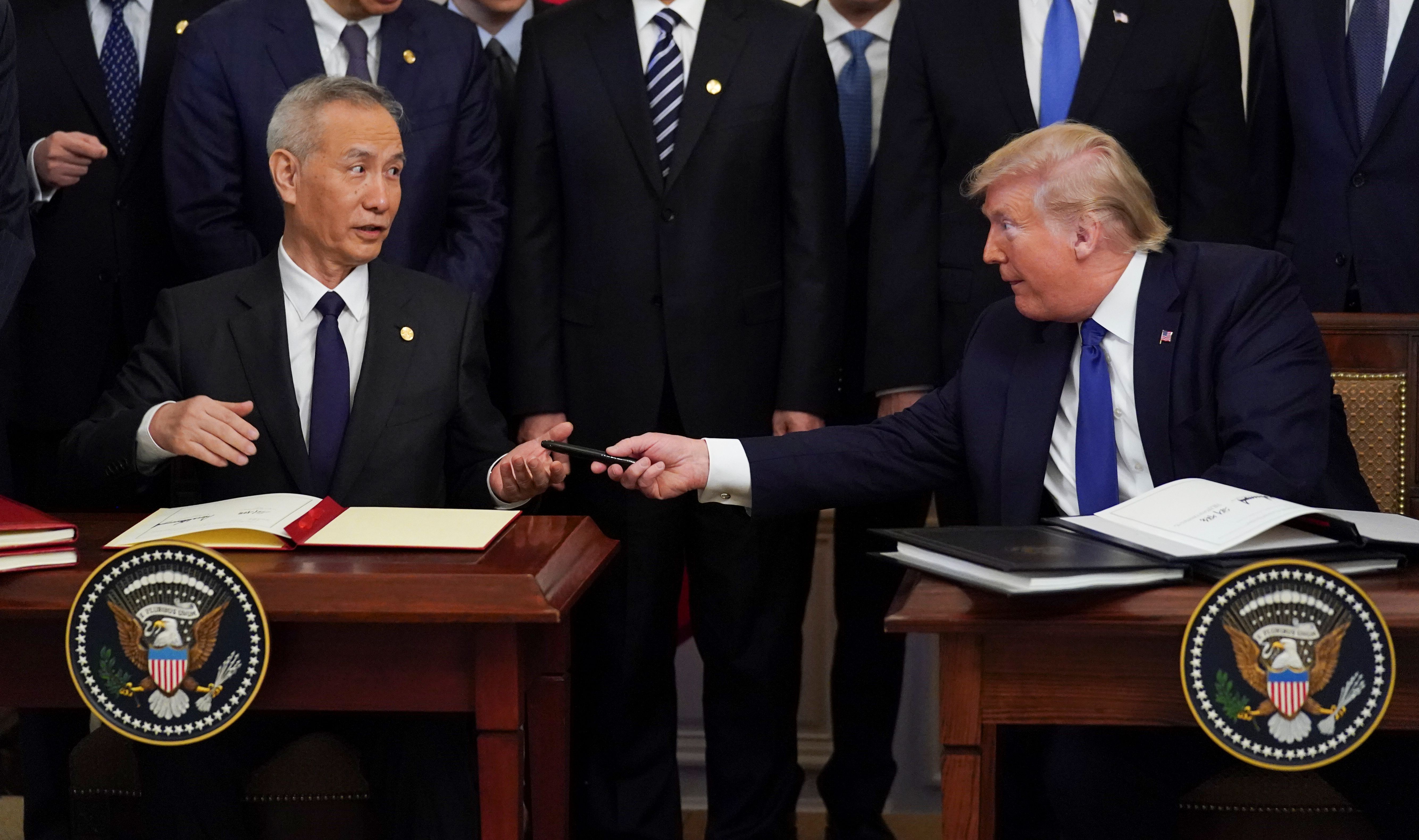A Preliminary De-escalation of the Trade Dispute between the U.S. and China

What is included in the “phase-one deal”?
China pledged to buy $78 billion worth of U.S. industrial goods by 2021, higher than in 2017, $52 billion in energy resources, $32 billion in agricultural and food products, and $38 billion in services. China also is to increase intellectual property protection and stop forced technology transfers, as well as increase access to financial services. The American and Chinese duties previously imposed will, however, remain. The U.S. will cut in half the rate on $100 billion worth of Chinese products, from 15% to 7.5%, but will keep a 25% duty on goods worth $250 billion. The agreement does not mention the Chinese practise of subsidizing enterprises in the PRC, cybersecurity, or the verification and enforcement of the changes in the economy declared by the Chinese side. The Trump administration had previously announced that these issues would be included in the negotiations.
What does the agreement mean for the U.S.?
The Trump administration views the deal as a success at the beginning of the presidential election year. The ongoing trade dispute has hit American agricultural producers and increased the prices of imported goods from China. With the deal, China’s commitment to increase purchases of American products is expected to help Trump convince voters that his policy has not hurt them. Improving the trade balance with China was the main slogan of Trump’s presidency, which is why he will present the agreement as a fulfilment of his commitment. The agreement, however, does not address the trade deficit but, in fact, increases purchases; moreover, the remaining provisions in this “phase-one” agreement do not force far-reaching changes in the Chinese economic model. It is also uncertain whether China will fully implement the deal.
How does the deal benefit China?
China managed to prolong the negotiations with the U.S. and avoid concessions that it did not want. Some of the concessions included in the deal are even a repetition of existing commitments, such as those in China’s accession protocol to the WTO. It is a play for time, with the Chinese counting on Trump’s defeat in the presidential election and subsequent renegotiation of this deal or another approach from a new administration to further negotiations. The opening of the financial market in the U.S. is beneficial for China itself, as it will facilitate the acquisition of more currency, which will support China’s public debt service. The maintenance of the duties allows China’s authorities to continue to present the U.S. to Chinese society as responsible for economic problems. Of symbolic significance for China—a political gesture from the Trump administration—was the annulment of last year's recognition of the PRC as a “currency manipulator”.
What does the agreement mean for the future of China-U.S. relations?
The conclusion of the deal reduces tensions between the U.S. and China but does not end the current dispute or rivalry in the longer perspective. Both countries sought to stop the escalation: further tariffs and rising product costs in the U.S. would not help Trump’s election campaign, while Chinese leader Xi Jinping wants to avoid increasing the pressure on him because of slowing economic growth. Therefore, they moved ahead with this preliminary agreement, even though it doesn’t resolve the abolition of the U.S. duties or address structural changes in the Chinese economy, all of which been postponed to be negotiated in a “phase-two” agreement. However, it’s probable that none of it will happen soon and neither party is anxious to finalise the next agreement or introduce new duties before the presidential election in the U.S. in November. It can be expected that in the implementation of the “first phase”, China will focus on increased purchases of goods from the U.S.
What significance does the agreement have for the EU?
The initial de-escalation of the dispute will calm global markets, which is beneficial for the EU, and also for Poland. In turn, the continuation of the customs duties may increase the competitiveness of EU goods. However, this partial trade agreement may be incompatible with WTO regulations, which the Union aims to maintain as important. This reduction of tensions between the U.S. and China also means, on the one hand, that the EU will remain an important partner for both countries and, on the other, that the Trump administration may increase pressure on the EU in talks. Increasing tariffs on, for example, European cars imported into the U.S. could, however, be too controversial before the election. China will try to use a summit with the EU in March this year and the “China+27” meeting in autumn to gain better relations with the Union, which might strengthen its position in the “phase-two” talks with the U.S.



